Restoring eucalypt forests at Wilsons Promontory National Park
Tuesday 11 April, 2023
The sharp scent of eucalyptus at Wilsons Promontory National Park is a dominant yet calming feature of this special Victorian refuge – a distinguishing characteristic of its wild, natural beauty.
Tall, eucalypt forests and the many species they support are one of the many natural habitat types found across the Prom’s 50,000 hectares, which includes heathlands; open grassy Banksia woodlands; wetlands; coastal dune ecosystems; dramatic rocky outcrops; and saltmarshes and mangrove forests.
Beyond the visitor experience, the importance of native eucalypts extends to species such as the vulnerable Powerful Owl and endangered Gang Gang Cockatoo, which are dependent on old hollow-bearing trees for their survival.
Unfortunately, the future of these tree species at the Prom is at risk.
The long history and heightened intensity of bushfires across Victoria, dating back to European settlement, is triggering regeneration failure in areas where eucalypts once thrived.
The first half of the 20th century saw a spate of devastating fires in close succession, most of which were caused by humans during cattle grazing operations and military training activities. After a period of reduced fire, the Prom experienced widespread devastation following the 2005-06 bushfire season and the Black Saturday fires of 2009.
As these severe weather events grow more frequent, the Prom landscape and the species within it have smaller windows of time to bounce back. Without prolonged opportunities for recovery, large areas where eucalypts have not regenerated successfully, and remain largely unsuccessful in re-establishing, now exist across the Prom.
These areas are referred to locally as pockets of ‘collapsed forest’ and cover more than 1,200 hectares of the park.
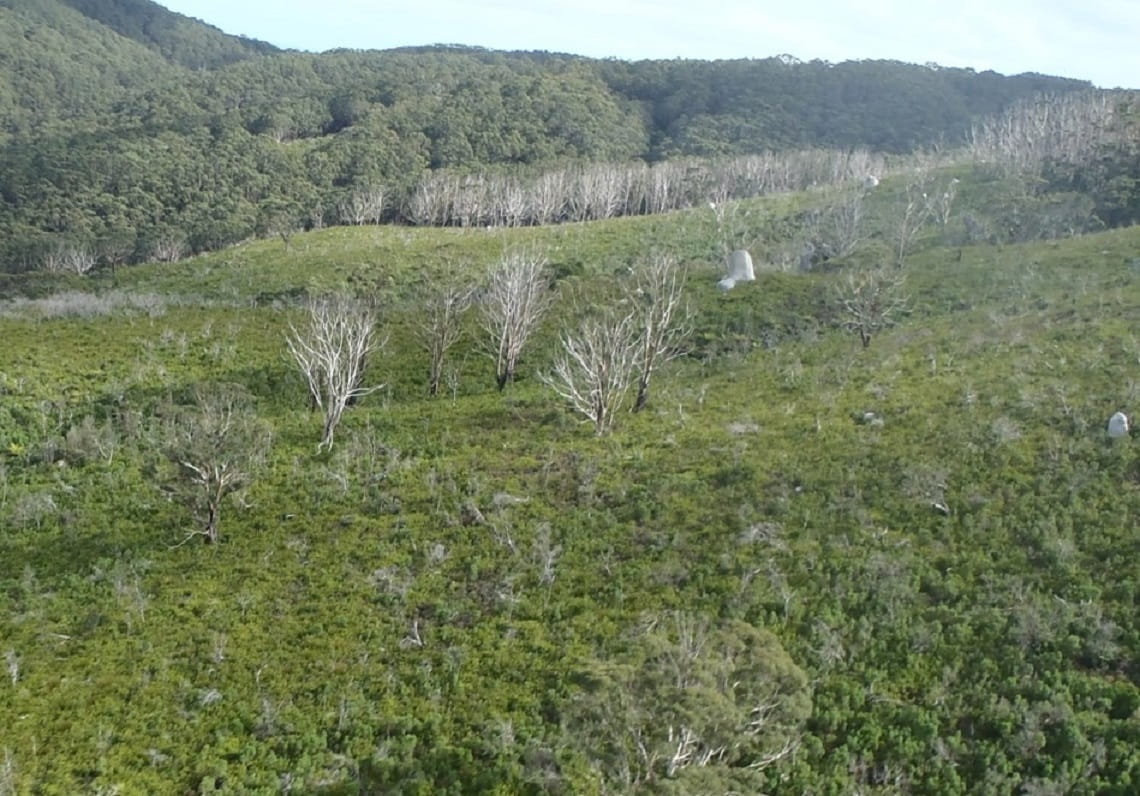
The edge of a collapsed forest in the south of the Prom, Credit - Parks Victoria
Understanding the impacts of eucalypt collapse on the Prom landscape
Despite evolving from rainforest ancestors and adapting to an environment in which drought, nutrient-poor soils and fire are increasingly common, eucalypt loss is occurring at a grand scale.
Parks Victoria restoration ecologist Brooke Love is leading a trial to protect and restore areas threatened by both climate change and past fire events.
“Loss of eucalypt tree species at the rate we’re seeing can create potentially irreversible shifts in forest cover, landscape pattern, soil health and biodiversity,” Brooke said.
“We’ve been monitoring the environmental impacts of existing, long-established areas of collapsed forest at the Prom, but there are multiple sites on the cusp of collapse due to their slow recovery from fires in 2005 and 2009. Where mature eucalypts were killed in those far reaching, recent fires, there are now young forests attempting to flourish in their place. As they are only just beginning to produce seed, another fire could see them permanently disappear.”
“However, thanks to a $294,000 investment from the Victorian Government’s BushBank program, we have started phase one of a five-year project focused on forest recovery.”
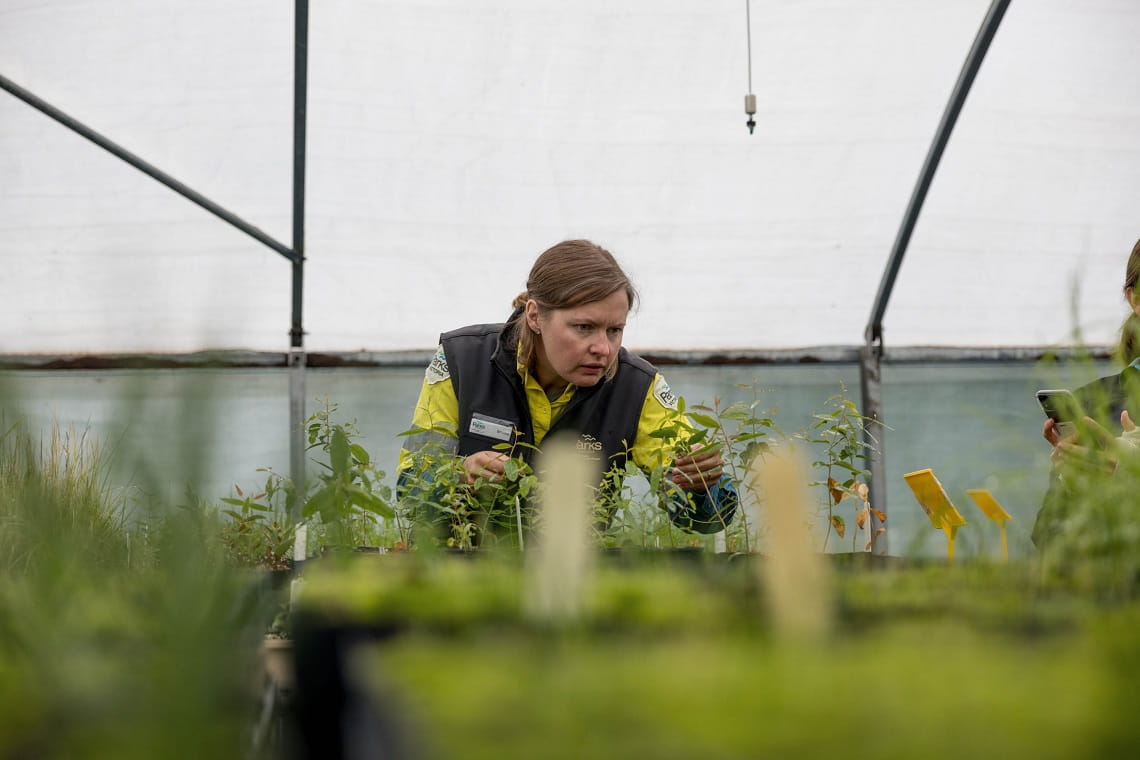
Restoration ecologist Brooke Love with propagated eucalypt trees, Credit - Parks Victoria
Brooke believes it’s crucial to see the bigger picture – the key role eucalypts play in preventing ecosystem collapse.
“When a mature forest collapses, topsoil at the impacted site loses a root system to cling to. This soil can wash into and contaminate streams, impacting the survival of native fish and platypus populations,” Brooke said.
“Without any canopy to provide shade, existing topsoil can dry out and trigger a decline in fungi and invertebrate species. Loss of these species as a food source can then lead to fewer small diggers such as bandicoots, potoroos and lyrebirds living in the area – their constant burrowing and foraging helps improve soil health, and increase soil moisture and nutrient content.”
“Without the small diggers as prey and lack of tree hollows for habitat, native predators such as owls, eagles and goannas could quickly disappear,” Brooke said.
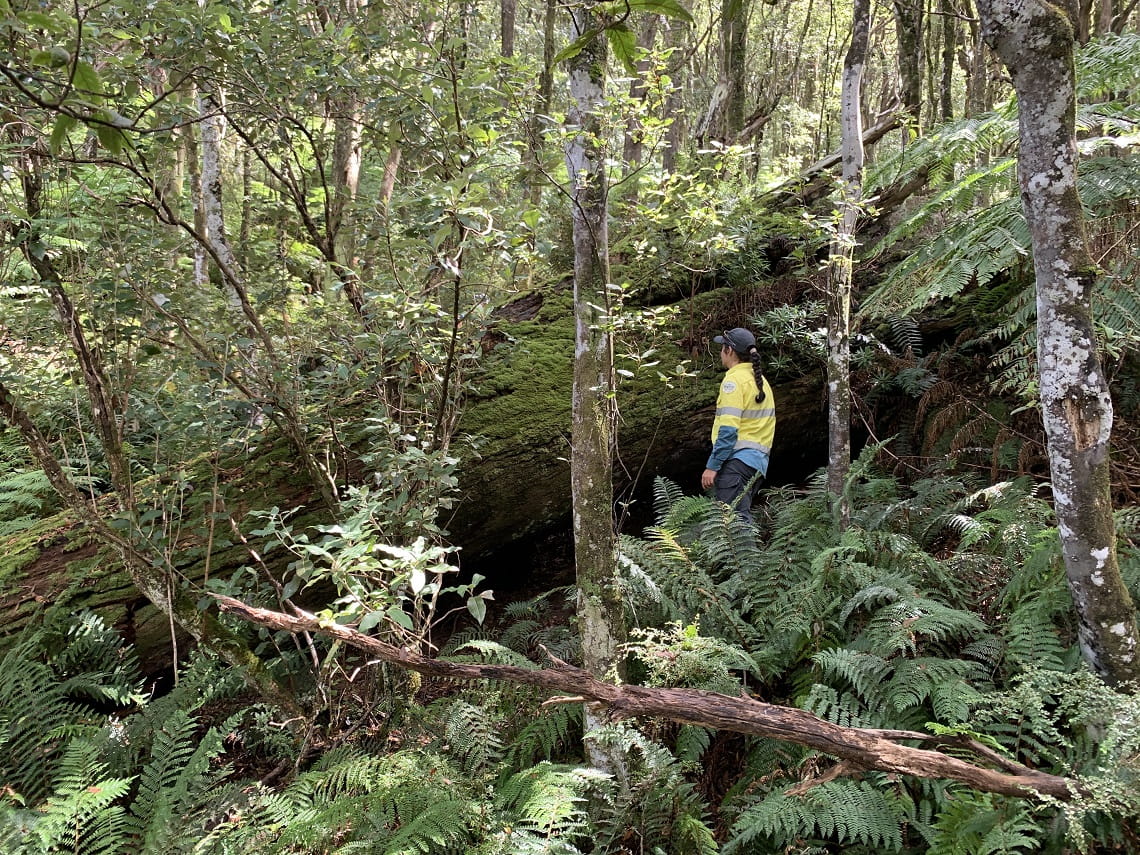
Park rangers measure and map 'stags', which are large dead trees that lived before the forest collapsed, to learn what the forest once looked like, Credit - Parks Victoria
Kick-starting the BushBank initiative at the Prom
The BushBank program aims to restore natural environments across Victoria through the planting of millions of native plants and trees, carefully selected to benefit a range of species.
The program is supporting Parks Victoria’s ongoing and crucial work to establish Wilsons Promontory National Park as a nationally significant climate change refuge.
Parallel works of building a pest- and predator-exclusion fence across the park entrance, pest and weed control programs, and multiple habitat restoration projects are all part of establishing the broader Prom Sanctuary – a largescale project that will transform the much-loved park into Victoria’s largest conservation sanctuary where nature is cared for, and native animals and plants thrive.
“Phase one of the BushBank program includes seed collection from existing eucalypt trees across the entirety of the landscape to establish a large and diverse bank,” Brooke said.
“From this bank, aerial reseeding will occur across two 16-hectare trial sites, where Parks Victoria staff are aiming to develop the most effective method for restoring collapsed forests, both proactively following ecological burning and opportunistically after bushfire.”
This includes testing which seed types – hybrid or pure – spur growth at the fastest rate, produce the most fertile or longest surviving trees and what the optimal number of seeds per hectare will be when reseeding is required after fire.
To future-proof the outcomes of this trial, Parks Victoria is working in partnership with researchers from the University of Melbourne to measure the health of the Prom's eucalypt forests and understand whether the presence of collapsed forests could increase the future risk and potential intensity of bushfires over time.
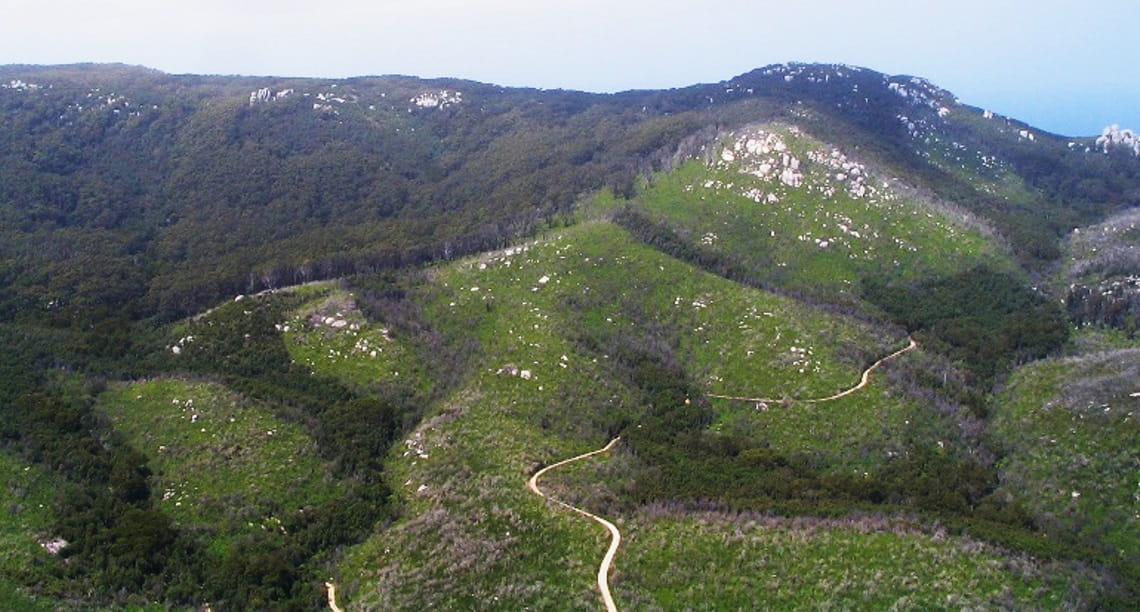
An area of collapsed forest that will be reseeded as part of the BushBank trial, Credit - Parks Victoria
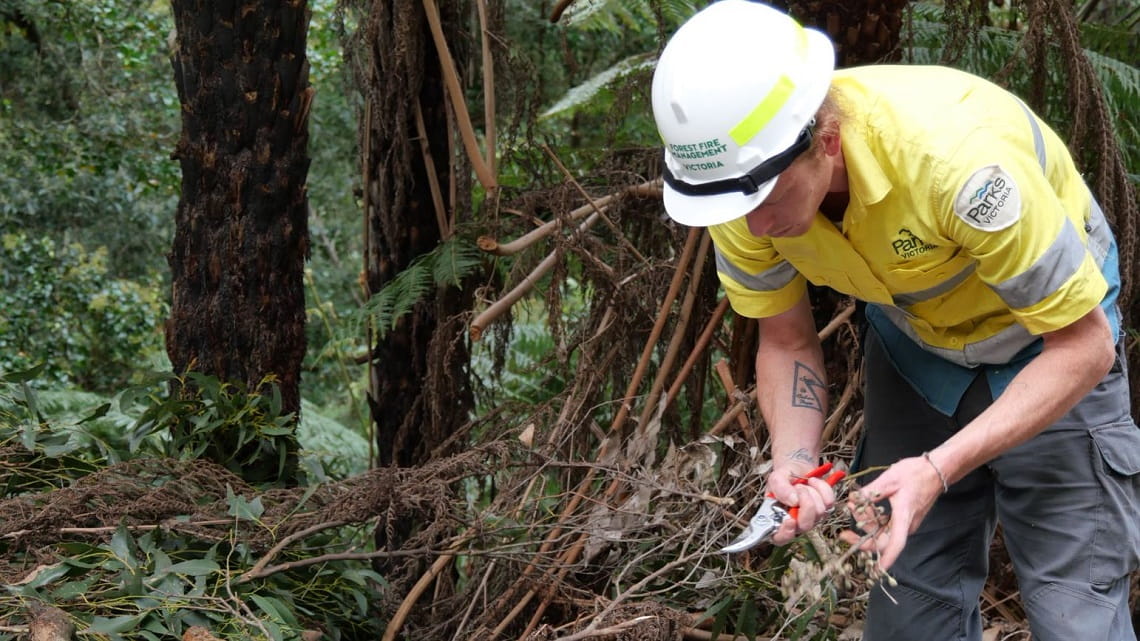
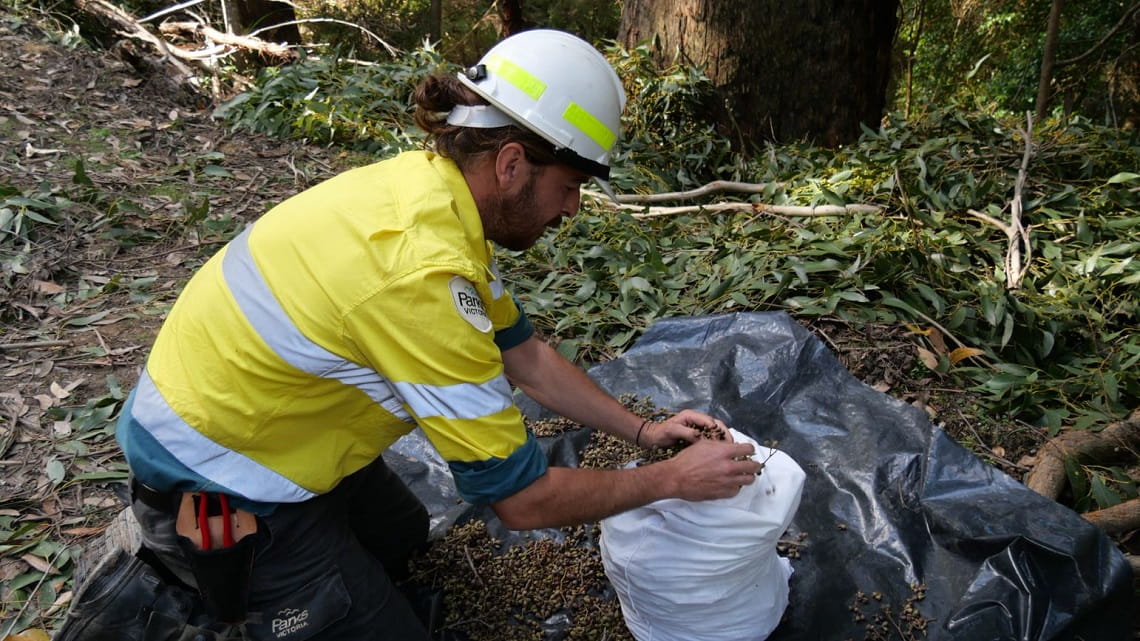
Parks Victoria rangers work with arborists to remove capsules from branches that have been pruned from the canopy, Credit - Parks Victoria
The types of eucalypts local staff are collecting seed from include Mountain Ash, Tasmanian Blue Gum, Mountain Grey Gum, Yellow Stringy and Messmate.
“We have a highly skilled team of two contracted arborists and two dedicated rangers who hike through dense vegetation, creeks and swamps to find the seed we require," Brooke said.
“There are times when helicopter transport and overnight camping is required to secure rarer species, such as the seed produced by the endangered Tasmanian Blue Gum.”
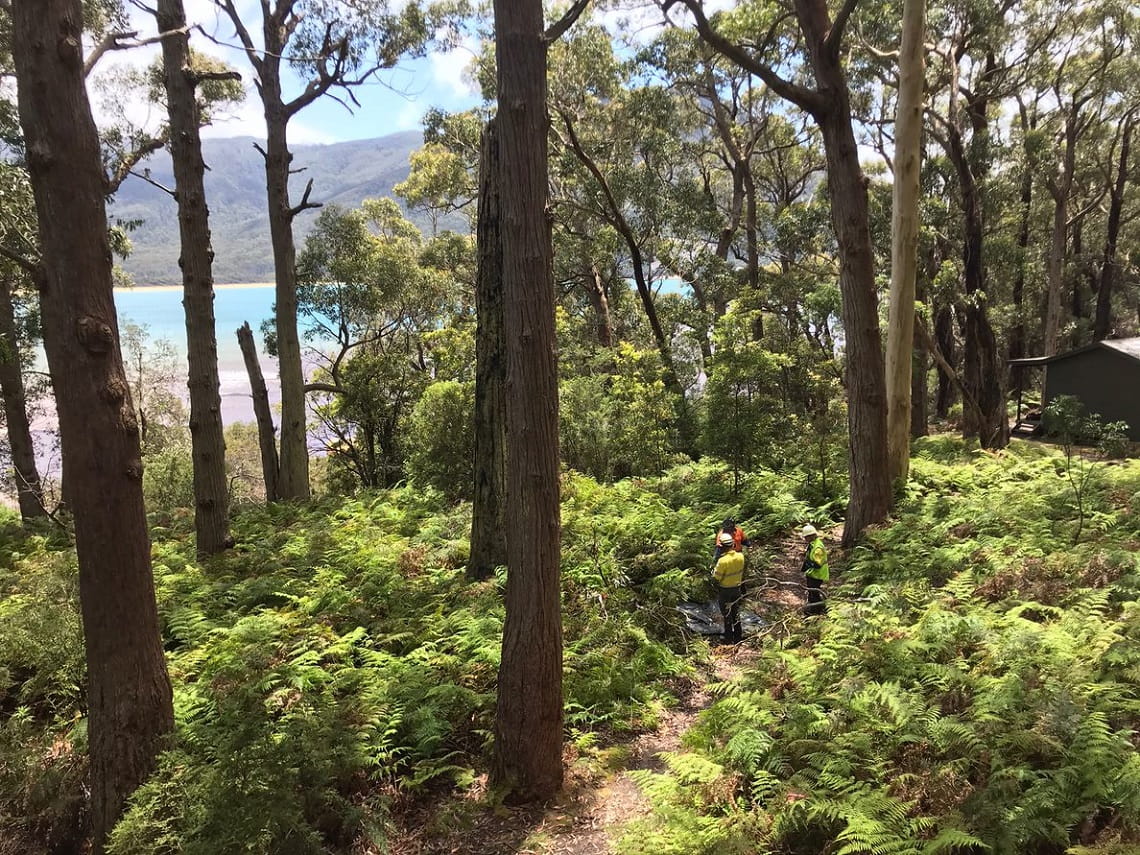
Seed collection areas range from the coast to the deep rainforest gullies and mountain slopes, Credit - Parks Victoria
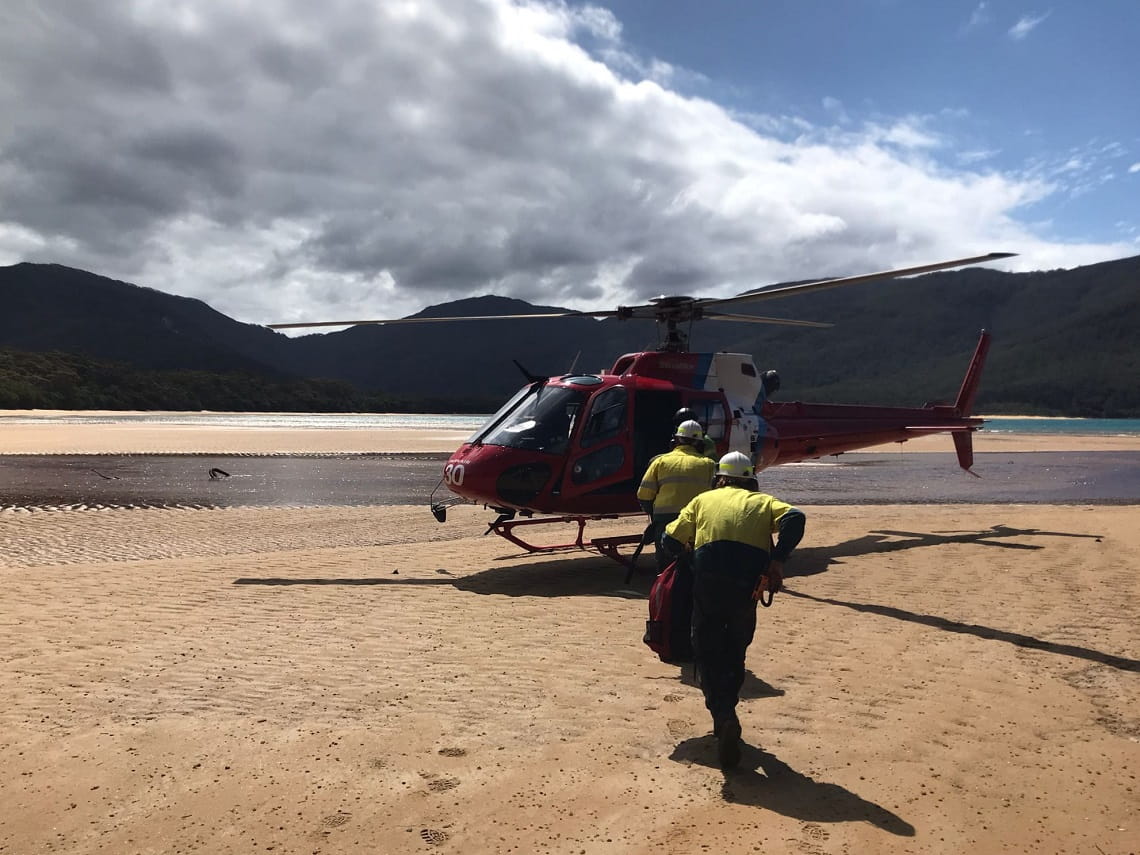
The seed collection team has travelled by air to reach some of the precious seed from species such as endangered Tasmanian Blue Gum, Credit - Parks Victoria
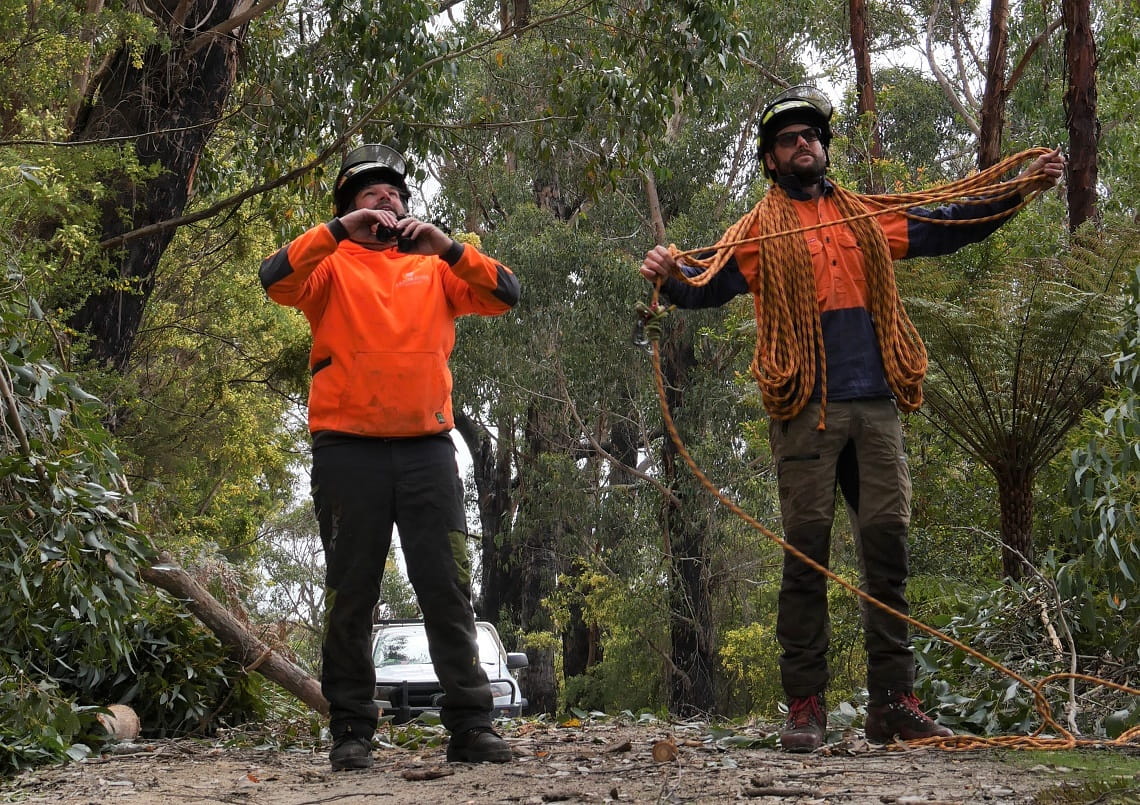
Arborists use binoculars to identify heavy seed crops before climbing trees, Credit - Parks Victoria
Local community comes together to support seed collection
Once eucalypt seed capsules are collected, they are dried indoors at Parks Victoria’s Yanakie office.
“The drying process encourages seeds to detach from their capsules and after a couple of weeks, we place everything into pillowcases that members from the Friends of the Prom nursery group can sort and separate by species,” Brooke said.
“This is a big job for this small but passionate group of volunteers.”
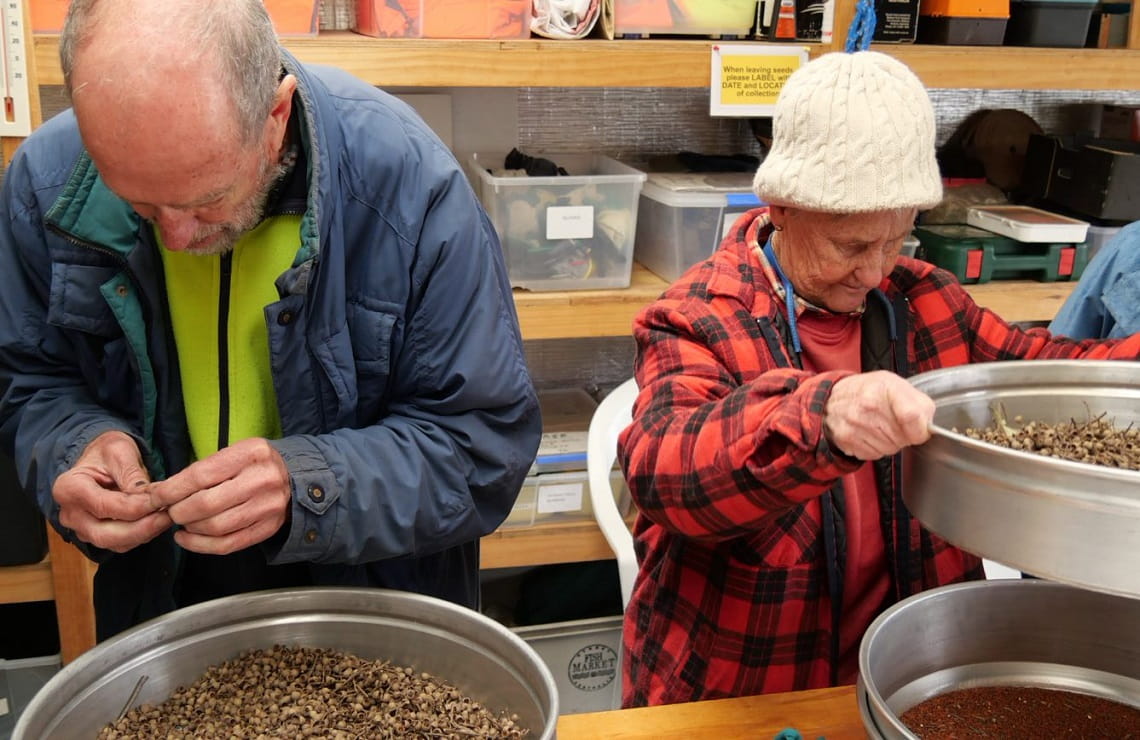
Friends of the Prom volunteers undertake all of the seed extraction and testing at their nursery at Tidal River, Credit - Parks Victoria
“They will first agitate the capsules by hitting the pillowcases on a benchtop to make sure every tiny seed falls out. They will then weigh, catalogue and store the seeds before propagation can begin. For each batch of seeds, they sprinkle a quarter teaspoon over a standard propagation tray. From here, all types of observations will be made to determine their quality,” Brooke said.
“A select few seedlings from each batch will be transferred into pots to collect a wealth of data about their growth – from the kind of juvenile leaves they develop, the thickness of their branches and more – to understand differences between species and whether some of our suspected hybrids are in fact new species or species not previously recorded at the Prom.”
“In preparation for aerial reseeding, we will conduct ecological burns at the two trial sites to simulate a low intensity bushfire event, allow the ash to distribute essential nutrients back into the soil bed, and reduce invasive plant species to create an optimal environment for growth. This is a natural process in a eucalypts’ life cycle and gives the seeds the best opportunity to survive.”
“It will be crucial for us to see how these two trial sites develop in comparison to the surrounding collapsed forest, which will be free from intervention.”
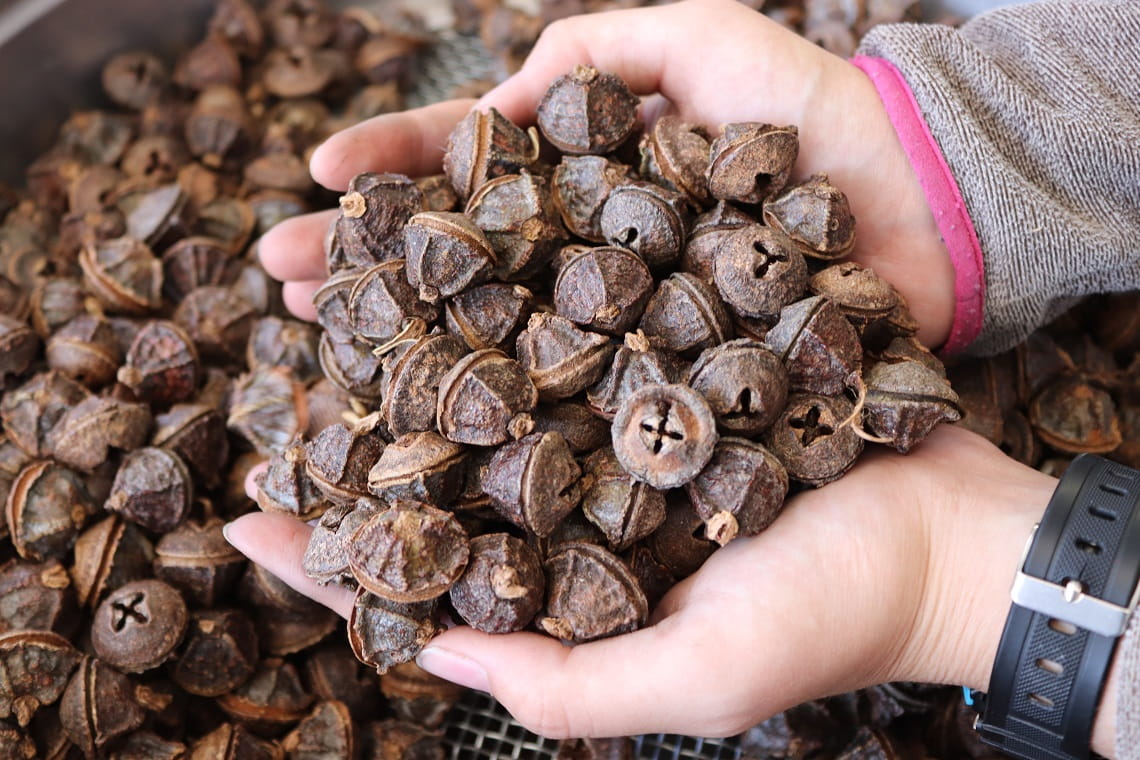
A collection of eucalypt capsules with seeds inside ready for harvesting, Credit - Parks Victoria
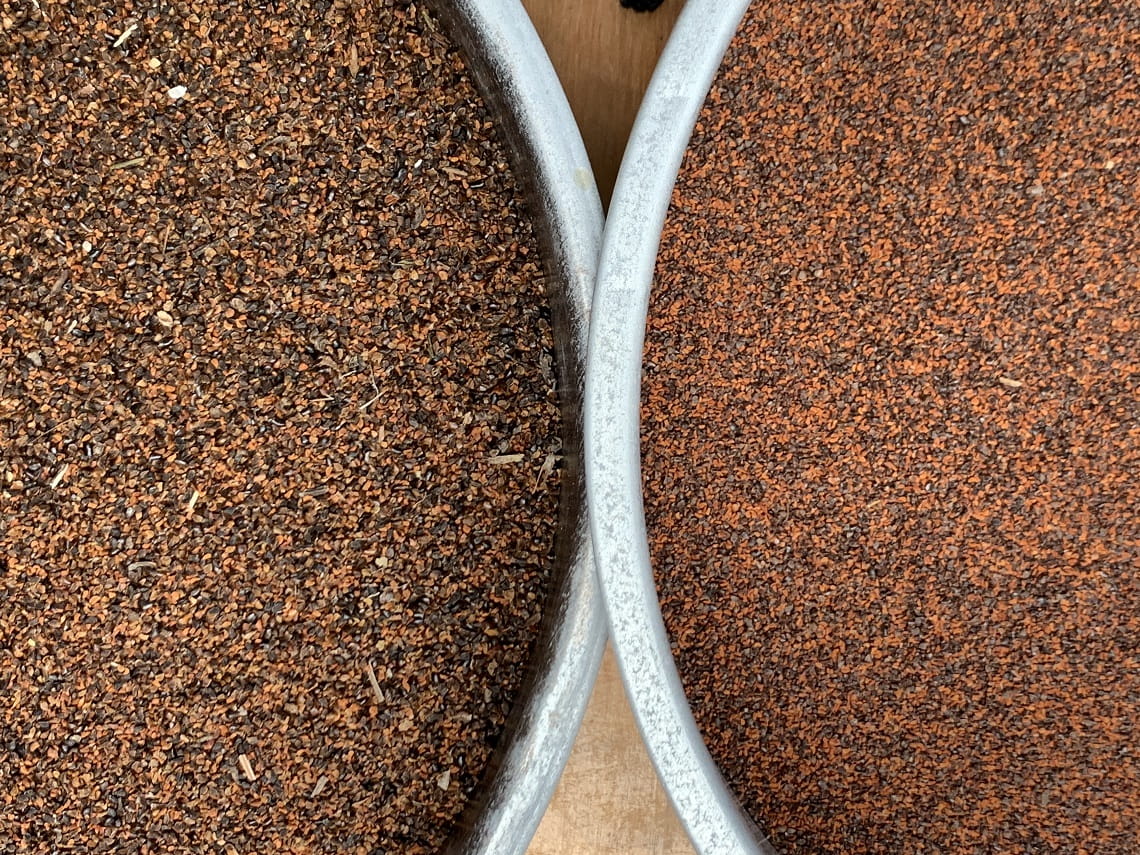
Eucalypt seeds are tiny, sometimes as small as one millimetre, Credit - Parks Victoria
Parks Victoria will be collecting seeds until the end of autumn. If you would like to volunteer your time to support this initiative and other similar projects, please visit friendsoftheprom.org.au.
This conservation work contributes to the Wilsons Prom Sanctuary project, supported by funding from the Victorian Government and the Australian Government.
The Prom Sanctuary project aims to deliver restoration of at-risk habitats and invasive species removal to support wildlife restoration and resilience at a large scale. Restoration of tall forests is a crucial part of our long-term goals under the Prom Sanctuary project to restore habitats that need some help.
Find out more at Wilsons Prom Sanctuary.




